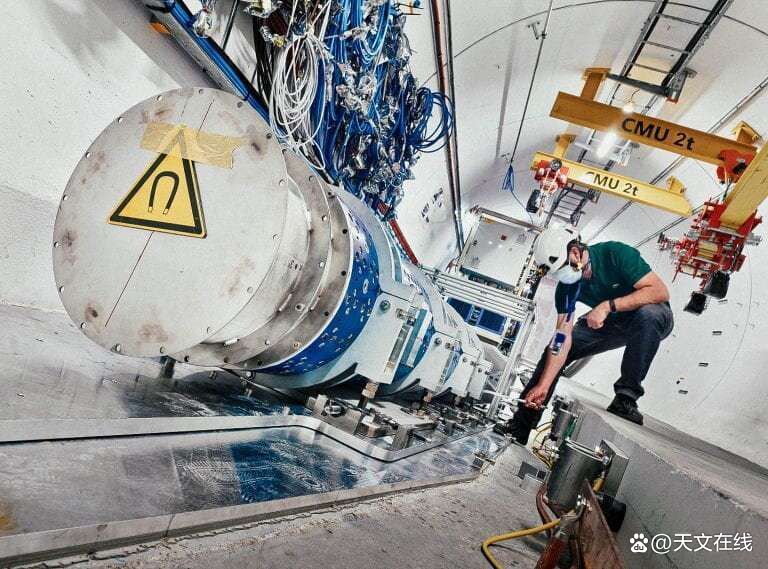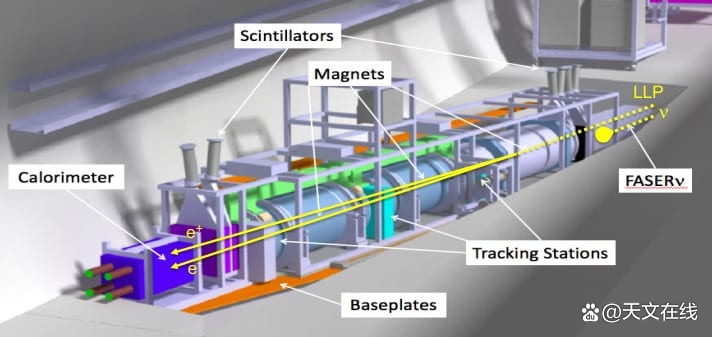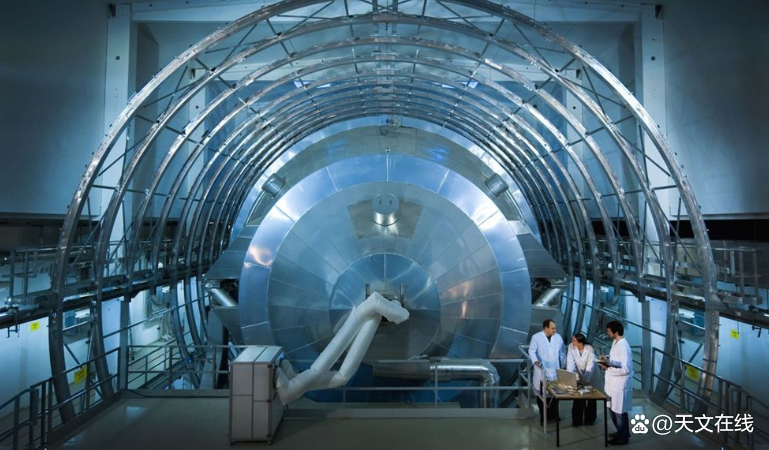found it?This is the candidate of the neutron, how did scientists discover it?
Author:Astronomy online Time:2022.06.23
Middle microons, elusive, difficult to find
Miracles generated by collisions

FASER particle detector. (Picture source: European Nuclear Research Center CERN)
(* FASER, or search experiments in front, aiming to search for particles with light and weak interactions.)
For the first time, researchers have detected candidates from the European Nuclear Nuclear Research Center facilities (CERN) facilities (CERN) near Geneva, Switzerland Geneva.

(CERN member states distribution. From Wikipedia)
Researchers reported in a new study that six neutrinos interacted were observed in an experiment in a large strong -son collision (LHC), which belonged to an important milestone in particle physics. The neutron is a sub -atomic particle. The quality is as small as electron, but without charge -this feature makes them extremely difficult to detect.
It is said that these neutrinos were produced during the first operation period of the 2018 East Experiment (CERN) to search for the Ectopic Experiment (FASER).

(FASER structure. From the official website of Oregon School)
"Before this project, he never saw signs of neutrinos on the particle collision," Jonathan Feng, a co -person in charge of the University of California, Professor of Physics and astronomy, and the FASER Association Speaking. "This major breakthrough is a step towards a deeper understanding of these elusive particles and its role in the universe."

Large -scale strong collision (LHC) -Including four main detectors: Alice, ATLAS, CMS, and LHCB -usually work with two high -energy particle beams at a speed of nearly light. When the charged particles, such as a proton, hit each other at such a high speed, the energy of the impact will become a new particle or sub -atomic particle. Therefore, the large -scale strong collision machine can basically "produce" sub -atomic particles.

In this operation of a large strong -tinner collision, the team is using a new emulsion detector for pilot testing. The instrument consists of dense lead and tungsten metal plates, scattered a layer of emulsion. Feng explained in the statement that the emulsion board or layer in physics is similar to the old -fashioned film film. When the film film is exposed to light, the photon will be displayed as an image as the film appears. Similarly, when the instrument is exposed to particles collision, the emulsion layer shows the interaction of neutrinos after treatment.

In this test, the collision between particles produced neutrinos, and then impacted into the nucleus in the dense metal of the metal plate. The test results showed that the particles generated through this passed through the emulsion layer and left an observed "mark".
Feng shared that the report of the report on the report of the report revealed two main problems.
"First of all, it verifies that the interaction point of the detector atlas in the large strong -tincture of a large strong child collision is the correct position of the detecting the collienter neutron," Feng said. "Secondly, our efforts have proved the effectiveness of the interaction of these neutron interactions with the use of emulsion detectors."

(Atlas internal structure. From Atlas official website)
This is just an ambitious exploration of the interaction of neutrinos and continuing to explore the start of the strange world of the Asian atomic particles. The joint author, the co -owner of the FASER project and the UCI associate professor David Kasper said in the same statement.
"In view of the powerful function of our new detector and its main position at the European Nuclear Research Center (CERN), we expect that from 2022, we can record more than 10,000 times in the next operation of the large strong bumper (LHC). Neutonal interaction, "said Casper. "We will detect the highest energy of energy generated from the artificial source in history."
The FASER team also has a magnificent plan to explore dark substances in the large -scale strong collision (LHC). Their statement stated that the team is committed to using the FASER instrument for experiments to try to detect the so -called "dark light". Scientists hope to reveal the behavior and nature of secret matter through these experiments.

A paper published in the "Physics Review D" magazine today (November 26) describes the work.
related information
Large -scale strong collision machine is a collision particle accelerator located in the European nuclear research organization located in the suburbs of Geneva, Switzerland, which is used as an international high -energy physics research. LHC has been built. Trial operation began on September 10, 2008, and successfully maintained the two prototypes in the track, becoming the world's largest particle accelerator facility.

The European Nuclear Research Center was established on September 29, 1954. It is headquartered on the Farui border on the suburbs of Nigmond, Switzerland. The European Nuclear Research Center has the world's largest particle physics laboratory and the birthplace of Wanwei.com. CERN currently has 23 member states. Israel is the first and only non -European member states.
By: Chelsea Gohd
Fy:。.
If there is related content infringement, please contact the author to delete after the work is released
Reprinted, please obtain authorization, and pay attention to maintaining integrity and indicating the source
- END -
Today at 12:30, the second wave of Chengdu Digital RMB online consumer coupons were grabbed, and the types of vouchers and receiving time changed

Cover news reporter Yi Li LiAt 12:30 am today, the second wave of Chengdu Digital ...
Pu'er hundred science and technology experts help rural revitalization
The Pu'er Science and Technology Association takes the opportunity to carry out the 10,000 Talent Village action as an opportunity to make full use of the talent resources advantages of the expert c...